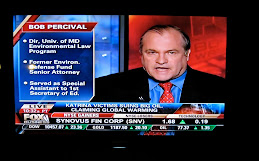On July 24 Zhao Hualin, director of the pollution prevention and control department of China’s Ministry of Environmental Protection (MEP), revealed that China’s State Council had approved a new plan to reduce levels of PM2.5 particulate pollution in North China. The plan seeks to achieve a 25 reduction from 2012 levels by the year 2017 in areas of the country that have been particularly hard hit by pollution, including Beijing, Tianjin and Hebei province. China’s central government plans to invest 1.7 trillion yuan ($277 billion) over the next two years to support the plan. The plan targets reducing levels of PM2.5 in Beijing to 60 micrograms per cubic meter of air by 2017. Wu Wencong, State Council Gives Approval to Tough Air Emissions Plan, China Daily, July 25, 2013. The current U.S. standard for PM2.5 is 12 micrograms per cubic meter of air. This illustrates how bad China’s air pollution has become.
The Center for International Environmental Law reports that on July 23 a lower court in Guatemala ruled that the Ministry of Energy and Mines (MEM) violated the law in granting a license to the Tahoe Resources silver mine. The court ruled that MEM was required to hear each of the more than 200 people who had objected to issuance of the license before granting it. The Guatemalan court upheld the appeal of Quelvin Jimenez who was represented by the Centre for Environmental and Social Legal Action in Guatemala. Tahoe Resources responded to the ruling by arguing that it did not make its license invalid and vowing to appeal the decision to the country’s Constitutional Court.
On July 23 federal district judge Robert Wilkins rejected the business community’s attack on the “conflict minerals” regulations issued by the U.S. Securities and Exchange Commission (SEC) pursuant to the Dodd-Frank Act. The regulations require certain companies to disclose the source of certain minerals they use that could be produced by rebel groups in the Congo. The judge had little difficulty rejecting the argument that the SEC had to prove that the regulations would reduce conflict in the Congo, distinguishing the D.C. Circuit’s 2011 Business Roundtable decision that required the use of cost-benefit analysis as involving economic regulations, rather than ones promoting humanitarian goals. The court also found that the SEC had properly rejected industry’s proposed de minimis exception to the regulations and that the disclosure requirement did not violate the companies’ free speech rights.
On July 26 the U.S. Court of Appeals for the Second Circuit upheld an award of $104.7 million in damages to New York City for ExxonMobil's contamination of water resources with methyl tertiary butyl ether (MTBE). The court rejected Exxon’s argument that the award was preempted by the Clean Air Act that required the use of MTBE in gasoline, finding that the verdict was not premised entirely on the use of MTBE, but also the lack of care in how it was used. The court upheld Exxon’s liability even though New York is not yet using the waters affected by MTBE and even though the levels of contamination are low.
On July 26 the U.S. Court of Appeals for the D.C. Circuit rejected challenges by Texas, Wyoming, and an industry group to EPA rules requiring permits for new or modified large, stationary sources of greenhouse gas (GHG) emissions. The decision was 2-1 with Judges Rogers and Tatel in the majority and Judge Kavanagh dissenting. Despite prior rulings upholding EPA’s authority to regulate GHG emissions, Texas had defied EPA and refused to amend its Clean Air Act state implementation plan (SIP) to require such permits. The court concluded that §165(a) and §167 of the Clean Air Act make the permitting requirement self-executing and prohibit the construction of a major emitting facility without best available emissions control technology. Once EPA regulated GHG emissions from mobile sources, GHGs became a pollutant subject to regulation under the Act, triggering the permit requirement and enabling EPA to issue permits even if a state failed to amend its SIP. The court held that the states and the industry group lacked standing to challenge EPA’s actions because EPA’s regulatory actions actually helped, rather than hurt, them. “The challenged rules operated to fill a permitting gap in several States and thereby ensure that a permitting authority existed to issue necessary PSD permits. Vacating the challenged rules would mean neither those States nor EPA could issue greenhouse gas PSD permits, and construction of a major emitting facility could not proceed in those States.” Thus, standing requirements, which have been used to keep environmentalists out of court at times, were used here to dismiss a challenge to environmental regulations. This is similar to what occurred when the D.C. Circuit in June 2012 upheld EPA’s initial GHG regulations in the Coalition for Responsible Regulation decision.
On June 23 the D.C. Circuit upheld the primary (health-based) national ambient air quality standard (NAAQS) for ozone that had been issued by the administration of President George W. Bush. Oddly, the court struck down the secondary (economic-based) NAAQS for ozone as insufficiently explained by EPA, even though it is set at the same level as the primary standard. This will not have any real practical effect since the primary standard remains in effect and the Obama administration is required to update the ozone NAAQS shortly.
One of the joys of teaching in Vermont Law School’s Summer Program is the extraordinary group of scholars Vermont attracts during the summer. Last week I had lunch with Distinguished International Environmental Law Scholar Tony Oposa, Jr., the Philippine environmental activist whose legal action resulted in the Philippine Supreme Court’s famous Minors Oposa decision recognizing the rights of future generations to be heard in environmental disputes. Tony recently has filed a notice of intent to sue if the Philippine government does not set aside a portion of the nation’s roads to serve the 98% of the population without motor vehicles. On Thursday he gave an inspiring talk at VLS describing his “CPR” (Conserve, Protect, and Restore) plan for the planet.

















